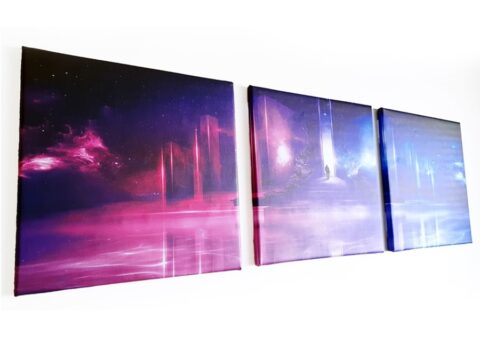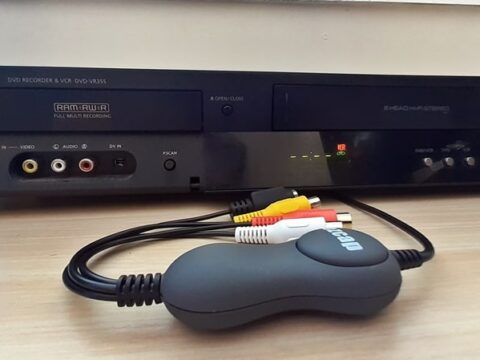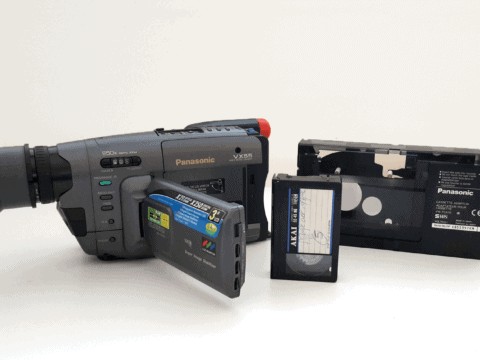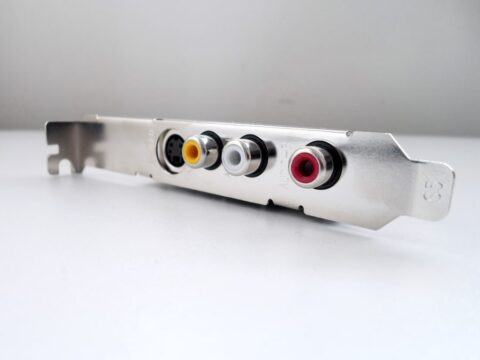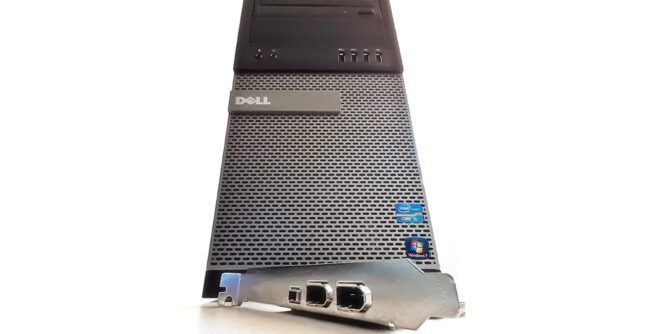
This article is going to show the process of how to install a FireWire card on Windows 10 in a step by step guide. Not only that, I’ll cover the installation process of the Microsoft Legacy Driver.
I do have another article written elsewhere called two ways to transfer Mini DV tapes to computer, and in that article there is a video to watch.
But I thought that by relying on another YouTuber’s video for readers, if that video was to disappear – there wouldn’t be any back up advice for anyone to follow.
So with my new (2nd hand) PC I figured it’s time to record the whole procedure with images.
Is FireWire Still Supported By Microsoft?
Technically no. Their support page refers to troubleshooting up to Windows 8 and 8.1.
But the good news is that those drivers for Windows 8.1 work just as well for Windows 10.

Upon saying that, some people have had issues with various cards that they’ve bought, saying that the FireWire card would not be recognized by Windows.
The above picture is the card I use. I’ve installed it on Windows 8.1 and now into a Windows 10 PC and it works.
No products found.
The above model is exactly the same but with the added third 6-pin connection.
Will you use that? Probably not, but the price is unbeatable.
Placing the FireWire Card into the PCIe Slot.
Because I’ve already used the very bottom slot for this card, I decided to reduce the graphics card to a GT710 low profile to make room.
The Dell Optiplex 7010 motherboard has only four slots and to be honest I’d rather use the dedicated slot for the card.

Placing the card in is just a matter of sliding it from top down. It will sit in place firmly, so don’t try to wriggle it in, otherwise you could damage the card.

From a different angle you can see it sits extremely close to the graphics card.

Along the back, you can see that the card is equipped with two 6 pin connections and a 4 pin connection.
Microsoft Legacy FireWire Drivers & Installation
First things first, visit this page from Microsoft to download the drivers. If you’re running Windows 10, then there’s a 99% chance you are running 64-bit.
The x86 driver is for older 32-bit operating systems.
You’ll see later that the folder the driver is kept in is under program files (x86).

Make sure to remember where the downloads have gone.
Usually the folder is PC / Downloads.

Next step is to type device manager into the search bar along the lower left and press enter.

If you connected the card correctly into the motherboard then it will show up under IEEE 1394 host controllers.
If for some reason you are not seeing the card at this very point check:
- Is the card definitely sitting in the PCIe slot?
- Is the card actually compatible for Windows 10?
If the device is showing under device manager, then right click and select Uninstall device.

Windows will prompt you to make sure if you want to uninstall.
Click on Uninstall.
Now go to the downloads folder (or wherever you have downloaded the Legacy Driver).

From here you will need to install the 1394_OHCI_LegacyDriver.msi file. Simply right click and select install.

It’s usually a quick pop up flash for the install.

Next step is to go to Program Files (x86) and look for 1394 OHCI Host Controller folder.

Inside you will see two more folders.

Simply open each folder and highlight the Legacy 1394 (it’s also the smallest file).
Right click and select install.

Give it a moment and the driver will complete the installation.

Going back to Device Manager, click on the Action tab and select Scan for hardware changes.

If you right click on the driver properties you will notice the driver date is from 2006.

You can update the driver from the properties window or right click from the Device Manager.

Windows will ask whether to search automatically , but instead select browse my computer for driver software.

On the next window select Let me pick from a list of available drivers on my computer.

The following window will show thew available drivers to choose from. The driver you are needing to install is the Legacy version.

Windows will proceed to update the drivers, give it a moment.

If installation went fine you’ll get the successful update message.

Now if you go back to Device Manager one more time – and click on the properties, you will see it is now updated to the more recent 2013 version.
Now that’s an ironic sentence right there!
So that’s how we install a FireWire card onto Windows 10.
You will need software to import your videos.
What’s The Difference Between 4 Pin & 6 Pin FireWire?
Now that brings us to the question: what’s the difference between all these FireWire cables? Can I use any of them? The simple answer is kind of?
Let me explain with a few examples.

This cable is a 4-pin to 4-pin and is only able to transfer data.

Some DVD/VCR combo drives have a FireWire 4-pin connection for DV cameras.
So the above cable would be fine burning footage to a DVD without the need for a computer. There’s a post explaining the differences between combo drives and a video editor quality.

Next we have a 6-pin to 6-pin cable. This particular cable can supply power and transfer data at the same time.

Most of the time (although don’t quote me) they would be used for devices like hard drives. That being said, Canopus used FireWire capture for a lot of their devices.
The model here is an ADVC-55 which is probably their lower end models for the time.
No products found.
These things seem to be hard to find even though better models are on Amazon.

The advantage of such a device is that I can plug the composite cables from a VCR.

Straight into the ADVC-55. This is probably the only time I’ve seen a device capture a composite connection to FireWire.

I’ll be doing a full review and tests very soon for ADVC-55.

And this device will be powered and transfer a high quality bitrate AVI file.

Finally there’s 4-pin to 6-pin cable. This is the standard cable you will receive with most FireWire PCIe cards.

They work perfectly for digital camcorders.
Although let me point out with the above example, that’s a Digital 8 camera and when it is connected by FireWire I can control the camera (via software) like fast forward/rewind etc.
That’s as long as the footage was recorded in Digital 8 format. If the footage is in Hi 8 or Video 8, I can’t control the camera because it was recorded in an analogue format.

Mini DV camcorders can be controlled via FireWire and software without any issues.
Conclusion
While they can appear intimidating to set up, if you have a PC with access to the motherboard, using a FireWire card will be a much better option than simply using a USB capture device as picture quality will always be far superior.

